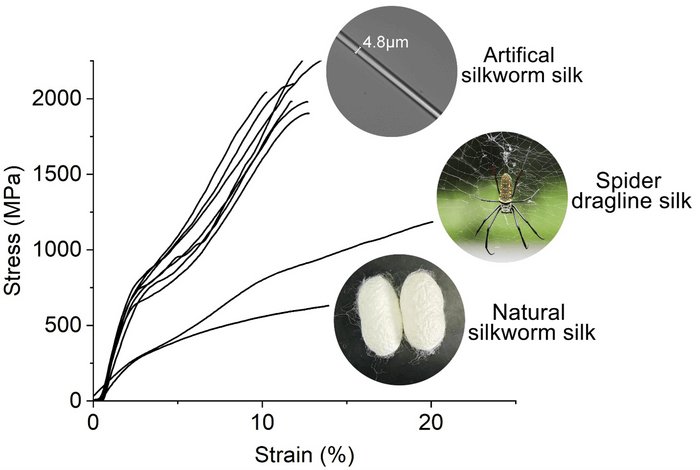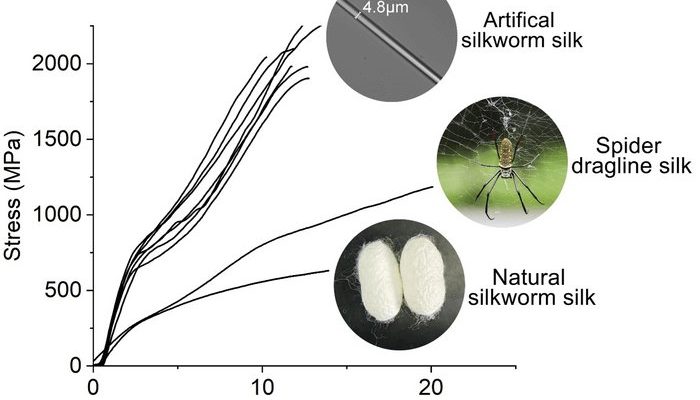
Silkworms, those fascinating little insects known for producing silk, don’t just sit idly when things get tough. Instead, they have some pretty remarkable ways of coping with stress. Understanding how these creatures react can teach us not only about their survival but also about our own resilience in challenging situations. So, let’s dive into the world of silkworms and explore their responses to environmental changes.
What is Environmental Stress for Silkworms?
Environmental stress refers to any factor that disrupts a silkworm’s well-being. Think about it as anything in their surroundings that can make life a bit tougher. For silkworms, this could include extremes in temperature, changes in humidity, or even a lack of food. Just like us, these little guys thrive best in certain conditions.
When silkworms are exposed to **high temperatures**, they can become lethargic and less active. Imagine trying to function on a super hot day; you’d probably feel pretty sluggish too! Low humidity can lead to dehydration, making them less able to handle their everyday activities. Each of these factors can stress silkworms out, affecting their growth, behavior, and even silk production.
How Silkworms Sense Stressful Conditions
Silkworms have special sensory mechanisms that help them detect changes in their environment. They use their sense of smell and touch to pick up on shifts in temperature and humidity. For instance, if the humidity drops too low, they can sense it through receptors on their bodies. It’s like how we feel the chill when the air conditioning is too high—silkworms react similarly.
Once they sense these changes, silkworms begin to adapt. This adaptability is crucial. It helps them make necessary adjustments before the stress becomes too overwhelming. They might alter their feeding habits or seek shelter to find a more suitable environment.
Behavioral Changes
Silkworms may exhibit noticeable behavioral changes in response to stress. *Have you ever felt like doing nothing when you’re stressed?* Silkworms sometimes do the same. They might slow down their activity levels, limiting how much they eat or move around. This behavior can help conserve energy during tough times.
Additionally, these insects might cluster together in groups, almost like humans coming together for support when things get tough. This behavior can help them maintain humidity levels and provide some protection against hostile conditions.
The Role of Genetics in Stress Responses
Just as humans have different genetic makeups that can influence how we handle stress, silkworms do too. Some silkworms are more resilient than others, thanks to their genes. This genetic variation plays a significant role in how they respond to environmental challenges.
Researchers have found that certain gene expressions are triggered when silkworms experience stress. These genes help produce proteins that can mitigate damage done by the stressful conditions. It’s like having a life jacket when you’re out on a boat—those with the right genetic traits have better chances of navigating through rough waters.
Physical Adaptations to Stress
Silkworms also show **physical adaptations** when faced with serious environmental stress. One key adaptation is the ability to change their metabolic processes. Under stress, they might shift their energy use from growth and reproduction to survival.
This means that instead of focusing on spinning silk or growing, they’ll prioritize staying alive. It’s quite a shift! If they face extreme heat, silkworms can enter a state of dormancy, which is like hitting the pause button on their lives until conditions improve.
Impact on Silk Production
You might be wondering how all this stress affects their famous silk production. Well, stress can significantly impact silk quality and quantity. Silkworms under stress often produce thinner, weaker silk. Just think about it: when you’re stressed, can you really perform at your best?
This drop in silk production is a big deal in the textile industry. Farmers and producers have to manage silkworm environments carefully to ensure high-quality silk.
How Can We Help Silkworms Manage Stress?
Understanding how silkworms react to environmental stress can also guide us in providing better conditions for them. If you’re curious about raising silkworms, there are several ways you can create a supportive environment.
First, maintain stable humidity and temperature levels. You can use humidifiers or heating pads to help regulate their environment. Regularly check these conditions to make sure they stay in the optimum range.
Also, providing a balanced diet is crucial. Silkworms thrive on mulberry leaves, so ensuring a fresh and plentiful supply can help them cope with potential stressors. By catering to their needs, you enhance their resilience and productivity.
The Bigger Picture: What Silkworms Teach Us About Stress
Silkworms may be small, but their responses to stress offer us valuable insights into resilience. Just like these little creatures, we face stressors daily. Observing how silkworms adapt can remind us of the importance of flexibility and support during tough times.
When we recognize stressors in our lives, whether it’s work, relationships, or health, we can take steps to manage them. Much like the adjustments silkworms make, we too can benefit from adaptable strategies, whether it’s seeking help or changing our environment.
Understanding how silkworms react to environmental stress not only highlights their unique biology but also mirrors our human experiences. By learning from these tiny insects, we can better navigate our own stressful scenarios.
In the end, silkworms and humans share the need for supportive environments and effective coping mechanisms. So, the next time you come across these little silk-producing marvels, remember their silent strength in stressful situations. There’s a lot we can learn from them!

